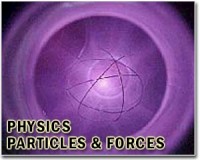 |
Berlin, Germany (SPX) Nov 08, 2010 Scientists from Helmholtz-Zentrum Berlin (HZB) observed exotic behaviour from beryllium oxide (BeO) when they bombarded it with high-speed heavy ions: After being shot in this way, the electrons in the BeO appeared "confused", and seemed to completely forget the material properties of their environment. The researchers' measurements show changes in the electronic structure that can be explained by extremely rapid melting around the firing line of the heavy ions. If this interpretation is correct, then this would have to be the fastest melting ever observed. The researchers are publishing their results in Physical Review Letters. In his experiments, Prof. Dr. Gregor Schiwietz and his team irradiated a beryllium oxide film with high-speed heavy ions of such strong charge that they possessed maximum smashing power. Unlike most other methods, the energy of the heavy ions was chosen so that they would interact chiefly with their outer valence electrons. As heavy ions penetrate into a material, there are typically two effects that occur immediately around the fired ions: the electrons in the immediate surroundings heat up and the atoms become strongly charged. At this point, Auger electrons are emitted, whose energy levels are measurable and show up in a so-called line spectrum. The line spectrum is characteristic for each different material, and normally changes only slightly upon bombardment with heavy ions. As a world's first, the HZB researchers have now bombarded an ion crystal (BeO), which has insulator properties, with very high-speed heavy ions (xenon ions), upon which they demonstrated a hitherto unknown effect: The line spectrum of the Auger electrons changed drastically - it became "washed out", stretching into higher energies. Together with a team of physicists from Poland, Serbia and Brazil, the researchers observed distinctly metallic signatures from the Auger electrons emitted by the heated BeO material. The Auger electrons appeared to have completely "forgotten" their insulator properties. The researchers see this as clear evidence that the band structure breaks down extremely rapidly when the BeO is bombarded with heavy ions - in less than about 100 femtoseconds (one femtosecond is a millionth of a millionth of a millisecond). This breakdown is triggered by the high electron temperatures of up to 100000 Kelvin. In the long term, however, the material of the otherwise cold solid remains overall intact. The HZB researchers' results deliver strong evidence of ultra-fast melting processes around the firing line of the heavy ions. This melting is followed by annealing that deletes all permanent signs of the melting process. Prof. Schiwietz hopes to find other ionic crystals that exhibit the same rapid melting process, but in which the annealing process is suppressed. If any are found, then a conceivable application would be programming at femtosecond speeds.
Share This Article With Planet Earth
Related Links Helmholtz Association of German Research Centres Understanding Time and Space
 Panel says particle search should continue
Panel says particle search should continueWashington (UPI) Oct 27, 2010 A U.S. federal advisory panel is recommending the last U.S. atom smasher be kept in operation - but only if the funding can be found, it says. If the money is not forthcoming, it will almost certainly mean the Tevatron collider at Fermi National Accelerator Laboratory will have to close next fall as originally planned, AAAS Sciencemag.org reported Tuesday. The Particle Physics P ... read more |
|
| The content herein, unless otherwise known to be public domain, are Copyright 1995-2010 - SpaceDaily. AFP and UPI Wire Stories are copyright Agence France-Presse and United Press International. ESA Portal Reports are copyright European Space Agency. All NASA sourced material is public domain. Additional copyrights may apply in whole or part to other bona fide parties. Advertising does not imply endorsement,agreement or approval of any opinions, statements or information provided by SpaceDaily on any Web page published or hosted by SpaceDaily. Privacy Statement |